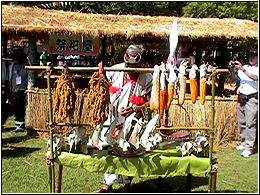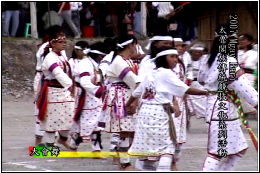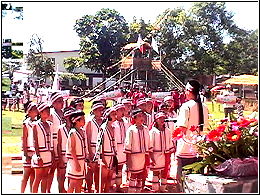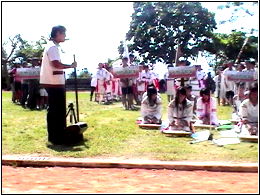|
¡@ |
Social System
A traditional Truku society's core is
their belief of their ancestral spirits. The most important element
of a Truku social system is Gaya, which sustain their people¡¦s
survival.
Gaya includes the culture of living
norm, evaluative judgments, etc., which the Truku follow in their
lives. The term ¡§Gaya¡¨ means customs, or conventions, which includes
laws, moral view, taboos, rituals, customs, and norms, etc.
Gaya also means ¡§a ritual group¡¨,
families from the same ritual group would hold various agricultural
ceremonies at the same day. They would also plant seeds and harvest
at the same day. So a Gaya is a group of Truku people that lives,
holds ceremonies, complies with taboos, and bears penalty together.
Whenever there is a festival, all members of a Gaya would sing,
dance, drink, and pray to the ancestral spirits for an abundant
harvest. After a person dies, his/her soul will reunite with his/her
ancestors of the same Gaya.
For the traditional Atayal people (Truku
people), all the behaviours of a person throughout his/her whole
life must obey Gaya. Disobedience will anger ancestral spirits and
incur penalty to oneself or other members in the same Gaya. So the
chief, priest, and priestess of a Gaya are responsible for
overseeing all members obeying Gaya.
Facial tattoos are the symbols of fame
for traditional Truku people. Only after many successful hunts can a
man has tattoos painted on his forehead and his jaw; a woman must
know how to weave cloth before she can have tattoos painted on her
forehead and cheeks. Only a person with a complete facial tattoo can
marry.
Due to the beliefs and conventions of
the traditional Truku society, they had a head hunting convention.
The Truku thinks that head hunting is a sacred and manhood-proving
action. Normally they would not go head hunting, unless they were
attacked by a foreign tribe, or they wanted to take revenge, or they
wanted blessing from gods during a disaster.
 |
 |
|
The priest prayed for a bumper crop |
Assembly dance after Thanksgiving
Festival |
 |
 |
|
Singing performance in Thanksgiving
Festival |
Traditional xylophone performance in
Thanksgiving Festival |

References:
1. Yu, G.H. (1981). ¡¥The Tribal
Organization of the Sejiq of the Atayal¡¦. Collected Papers of
Academia Sinica Institute of Ethnology, 50: 91-110.
2. Liao, S.C. (1998). The Social
Organization of the Atayal. Hualien: Tzu Chi University.
3. Li, N.L., Tu, L.C., Chen, P.Y.,
edited by Liu, H.Y. (2001). A Complete Guide to the Sacrifice of
Taiwan Aborigine. Taipei: Chang Min Culture.
|
¡@ |

